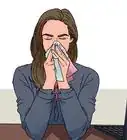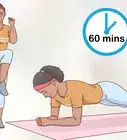This article was co-authored by Andrea Rudominer, MD, MPH. Dr. Andrea Rudominer is a board certified Pediatrician and Integrative Medicine Doctor based in the San Francisco Bay Area. Dr. Rudominer has over 15 years of medical care experience and specializes in preventive health care, obesity, adolescent care, ADHD, and culturally competent care. Dr. Rudominer received her MD from the University of California, Davis, and completed a residency at the Lucile Packard Children's Hospital at Stanford University. Dr. Rudominer also has an MPH in Maternal Child Health from the University of California, Berkeley. She is a Member of the American Board of Pediatrics, a Fellow of the American Academy of Pediatrics, a Member and Delegate of the California Medical Association, and a Member of the Santa Clara County Medical Association.
There are 22 references cited in this article, which can be found at the bottom of the page.
This article has been viewed 58,296 times.
One of the most common places you can get sick is at school. Students often come to school with the cold or flu before they realize they are ill, or because they don't want to miss a test or an event. Since practically every inch of the building is shared by everyone, germs can spread rapidly. The best ways to avoid getting sick at school are maintaining your health at home and avoiding germs at school.
Steps
Avoiding Germs at School
-
1Wash your hands as often as possible.[1] Wash your hands thoroughly with warm water and soap before you eat, and after you use the restroom or come into contact with anything that other students have used before you. Washing your hands often may cause dry skin, so carry moisturizing lotion during winter months.[2]
- First wet your hands with warm or cool running water, and add soap. The water doesn't need to be hot to clean germs and microbes from your hands.[3]
- Rub your hands together vigorously for at least 20 seconds, from the wrists to the tips of your fingers.
- If possible, use a nailbrush to clean under your fingernails, where germs collect.
- Dry your hands thoroughly with a towel or air dryer.
- Use a paper towel to shut off the faucet and open the door.
-
2Avoid biting your nails, or touching your hands to your face. Any germs you pick up on your hands will be transferred to your face, where they enter the body through the mouth and nose.[4]Advertisement
-
3Use hand sanitizer. When in doubt, it is a good idea to clean shared equipment, desks, or food trays with hand sanitizer to kill any germs that might be lurking there. Apply it liberally to your skin, and then rub your hands together thoroughly until they are completely dry.[5]
-
4Hold your breath when someone sneezes. Most germs enter your body through your nose and mouth, so it is a good idea to hold your breath for a few moments if you are standing near someone when they cough or sneeze.[8]
-
5Avoid sharing food or drinks with your friends. Although it might feel impolite to refuse your friend a sip of your soda, this is a great way to spread germs. Offer to buy them their own drink, instead.[11]
-
6Stay at home when you are sick. The best way to avoid passing your cold or flu onto someone else is to simply stay home when you are ill. Your body will also recover more quickly if you stay home and rest.[12]
Avoiding Germ "Hot Spots"
-
1Be careful in the bathroom. Although germs can live on most any surface, they are more likely to collect in certain places than others. In most schools the restrooms are cleaned at least once per day, but there are some areas that are frequently overlooked. It is estimated that 80% of all infections are caused by coming into contact with a contaminated surface.[13]
- Toilet seats aren't actually as bad as we think they are, and they are usually cleaned on a regular basis.[14]
- Door handles collect a lot of germs. The inside latch of a toilet stall has been touched by many students after using the toilet and wiping themselves. Many students also skip washing their hands, and then transfer their germs to the exit door as they leave. You can use a paper towel to open a door so that your hands don't get dirty.
- If you are a boy, there is no need to be shy about peeing in a urinal next to other boys. This is a perfectly normal thing to do, avoids unnecessary contact with germs inside the toilet stalls, and helps to keep the stalls cleaner for everyone else.
-
2Sanitize cafeteria trays before using them. Cafeteria trays aren't always cleaned between meals. Dishes are always washed after use, but the trays are sometimes overlooked.
- If you carry hand sanitizer, use it to wipe your tray before you get in line.
- Don't allow your tray to come into contact with any shared surfaces after it's been cleaned.
-
3Give your desk a quick wipe before sitting down. The average desk is used by five or six students in a single day. If any of those kids were sick, they probably left some germs behind.
- Keyboards and mice are also likely to collect germs.
- Hand sanitizing wipes are the quickest way to clean shared surfaces.
-
4Use care when using a drinking fountain. Some students put their mouths directly on the faucet, passing along their colds and flu to the next person in line. Try to avoid contact with the spout, and run the water for a few seconds before drinking.
- There may be as many as 2.7 million bacteria per square inch living on a public drinking fountain spigot.[15]
- If you want to be even safer, carry your own water bottle instead. Many schools now have stations where you can refill your water bottle without pressing a button.
-
5Clean more than your brushes. Art supplies are often shared, and seldom cleaned. Multiple students may be using the same art supplies in different class periods. Apart from rinsing paint out of brushes, cleaning art supplies is not usually a big priority for students or teachers.[16]
-
6Avoid using shared sports equipment that hasn't been washed. Although proper etiquette dictates wiping off exercise equipment after using it, not everyone does this. Shared equipment like balls, bats, and helmets can also be a hotbed for germs.
-
7Try not to touch playground equipment or picnic tables with your bare hands. Outdoor facilities like park benches and playground equipment are usually not cleaned on a regular basis. Since these items are shared by a great number of students over the course of a day, they tend to collect a lot of germs.
- Playground equipment has been shown to harbor trace amounts of fecal matter along with viruses and bacteria.[17]
- Run the water for a few seconds before drinking from the water fountain. Even better, carry your own water bottle instead.
Staying Healthy to Avoid Catching Cold or Flu
-
1Eat healthy foods as often as possible.[18] One of the best ways to avoid getting sick is to keep your immune system healthy. Try to eat plenty of fish, vegetables, and fruit, and avoid crash diets and rapid weight loss as this can make you more prone to illness.[19] Some of your favorite dishes have significant health benefits during cold and flu season.[20]
-
2Remember to take your vitamins and minerals. The best way to get the proper daily allowances of vitamins is to eat a wide variety of different, healthy foods. Because this isn't always possible, it is a good idea to take vitamin supplements, especially during the colder months.[24]
- Vitamin C won't prevent you from getting a cold, but studies have shown it may slightly help shorten the duration and severity of a cold.[25]
- It is believed that zinc supports the immune system, possibly stopping the growth of microorganisms in the body, including certain bacteria and cold-causing viruses; however, studies have been mixed in its effectiveness in preventing a cold.[26] Plus there are potential adverse effects from taking zinc. Check with your doctor before taking.[27]
- Some studies show that while echinacea won't prevent a cold, it can reduce the length and severity of cold symptoms.[28]
-
3Exercise regularly, but don't overdo it. Moderate exercise boosts the immune system by increasing your overall level of fitness. Walking, in particular, has been linked to an increase in white blood cells, which fight infection. But try to limit exercise if you're already feeling sick, especially if you have a fever – it might actually slow down your recovery.[29]
- Adolescents should get at least 60 minutes of moderate physical activity per day; adults should get 75 minutes per week of intense activity, or 150 minutes per week of moderate activity.[30]
- In one study, participants who walked for half an hour each day for one year got half the number of colds as the control group who didn't exercise.
-
4Cut back on your sugar intake. Try to avoid processed foods, which often contain high amounts of unhealthy sweeteners. Doctors recommend ingesting no more than 6 teaspoons per day for girls, or 9 teaspoons for guys. A typical can of soda contains about 10 teaspoons of sugar – well above the recommended daily limit.[31]
- Excessive sugar intake interferes with your white blood cells' ability to combat bacteria and viruses.[32]
- Studies have shown that simple carbohydrates like sugar can interfere with the body's immune system for many hours after ingesting it.
-
5
-
6Get vaccinated. A flu shot greatly reduces the chances that you will get seasonal flu and pass it on to others. Experts now say that everyone older than 6 months of age should be vaccinated on an annual basis.
- Seasonal flu shots are formulated to combat the specific influenza viruses that research indicates will be the most common that year.
- Despite the rumors, you can't get sick from getting a flu shot – flu vaccines are made either with inactivated, non-infectious viruses, or no viruses at all.
Expert Q&A
-
QuestionWhat should I do if I don't want to get sick?
 Andrea Rudominer, MD, MPHDr. Andrea Rudominer is a board certified Pediatrician and Integrative Medicine Doctor based in the San Francisco Bay Area. Dr. Rudominer has over 15 years of medical care experience and specializes in preventive health care, obesity, adolescent care, ADHD, and culturally competent care. Dr. Rudominer received her MD from the University of California, Davis, and completed a residency at the Lucile Packard Children's Hospital at Stanford University. Dr. Rudominer also has an MPH in Maternal Child Health from the University of California, Berkeley. She is a Member of the American Board of Pediatrics, a Fellow of the American Academy of Pediatrics, a Member and Delegate of the California Medical Association, and a Member of the Santa Clara County Medical Association.
Andrea Rudominer, MD, MPHDr. Andrea Rudominer is a board certified Pediatrician and Integrative Medicine Doctor based in the San Francisco Bay Area. Dr. Rudominer has over 15 years of medical care experience and specializes in preventive health care, obesity, adolescent care, ADHD, and culturally competent care. Dr. Rudominer received her MD from the University of California, Davis, and completed a residency at the Lucile Packard Children's Hospital at Stanford University. Dr. Rudominer also has an MPH in Maternal Child Health from the University of California, Berkeley. She is a Member of the American Board of Pediatrics, a Fellow of the American Academy of Pediatrics, a Member and Delegate of the California Medical Association, and a Member of the Santa Clara County Medical Association.
Board Certified Pediatrician & Integrative Medicine Doctor Make sure you wash your hands a lot during the day, especially before eating lunch or touching your face.
Make sure you wash your hands a lot during the day, especially before eating lunch or touching your face.
References
- ↑ Andrea Rudominer, MD, MPH. Board Certified Pediatrician & Integrative Medicine Doctor. Expert Interview. 13 April 2020.
- ↑ http://www.huffingtonpost.com/chloe-spencer/flu-season_b_1944377.html
- ↑ http://www.cdc.gov/handwashing/show-me-the-science-handwashing.html
- ↑ http://www.today.com/health/26-ways-avoid-getting-sick-winter-1D80290214
- ↑ http://www.cdc.gov/handwashing/show-me-the-science-hand-sanitizer.html
- ↑ http://www.cdc.gov/handwashing/show-me-the-science-hand-sanitizer.html
- ↑ http://www.health.com/health/gallery/0,,20752945_14,00.html
- ↑ http://www.prevention.com/health/health-concerns/how-doctors-avoid-sickness
- ↑ http://www.livescience.com/3686-gross-science-cough-sneeze.html
- ↑ https://shcs.ucdavis.edu/blog/staying-home-when-sick.html#.VyAQqz940pk
- ↑ http://www.huffingtonpost.com/chloe-spencer/flu-season_b_1944377.html
- ↑ https://shcs.ucdavis.edu/blog/staying-home-when-sick.html#.VyAQqz940pk
- ↑ http://source.southuniversity.edu/yuck-the-germiest-things-in-the-workplace-40614.aspx
- ↑ http://www.cnn.com/2013/08/15/health/avoid-school-germs/
- ↑ http://source.southuniversity.edu/yuck-the-germiest-things-in-the-workplace-40614.aspx
- ↑ http://www.cnn.com/2013/08/15/health/avoid-school-germs/
- ↑ http://abcnews.go.com/GMA/OnCall/story?id=3565507&page=1
- ↑ Andrea Rudominer, MD, MPH. Board Certified Pediatrician & Integrative Medicine Doctor. Expert Interview. 13 April 2020.
- ↑ http://home.trainingpeaks.com/blog/article/the-athlete-s-survival-guide-to-the-cold-and-flu-season
- ↑ http://www.cnn.com/2013/08/15/health/avoid-school-germs/
- ↑ http://www.fitnessmagazine.com/recipes/healthy-eating/tips/6-foods-that-prevent-sickness/
- ↑ http://www.fitnessmagazine.com/recipes/healthy-eating/tips/6-foods-that-prevent-sickness/
- ↑ http://www.prevention.com/health/health-concerns/what-eat-when-sick
- ↑ http://www.cnn.com/2013/08/15/health/avoid-school-germs/
- ↑ http://www.cnn.com/2013/08/15/health/avoid-school-germs/
- ↑ Andrea Rudominer, MD, MPH. Board Certified Pediatrician & Integrative Medicine Doctor. Expert Interview. 13 April 2020.
- ↑ http://www.mayoclinic.org/diseases-conditions/common-cold/expert-answers/zinc-for-colds/FAQ-20057769
- ↑ http://www.webmd.com/cold-and-flu/cold-guide/echinacea-common-cold#1
- ↑ http://www.prevention.com/health/health-concerns/how-doctors-avoid-sickness
- ↑ http://www.cdc.gov/physicalactivity/walking/index.htm
- ↑ http://www.prevention.com/health/health-concerns/how-doctors-avoid-sickness
- ↑ http://blog.myfitnesspal.com/the-surprising-benefits-of-cutting-back-on-sugar/
- ↑ Andrea Rudominer, MD, MPH. Board Certified Pediatrician & Integrative Medicine Doctor. Expert Interview. 13 April 2020.
- ↑ https://www.verywell.com/how-much-sleep-does-your-teen-need-2606870
- ↑ http://abcnews.go.com/Health/ColdandFlu/15-ways-prevent-colds-flu/story?id=18005129
- ↑ flu.http://thechart.blogs.cnn.com/2012/04/02/why-stress-makes-colds-more-likely/
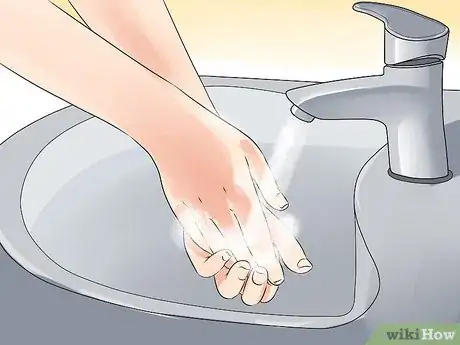


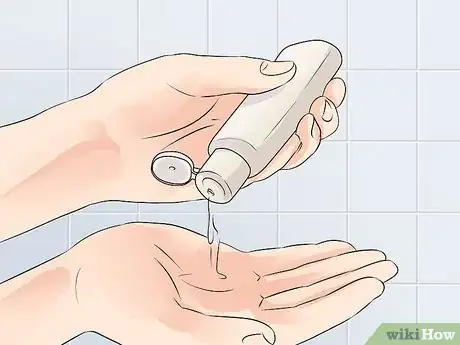




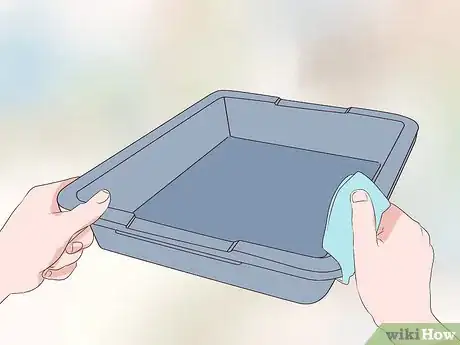

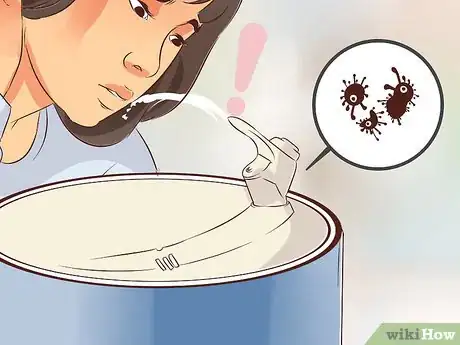
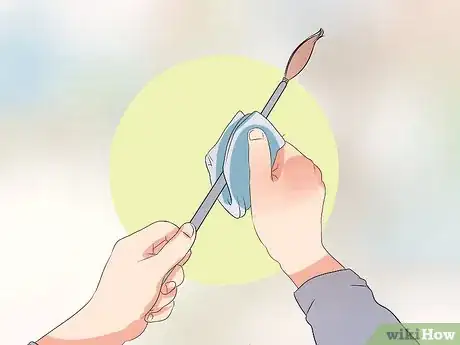

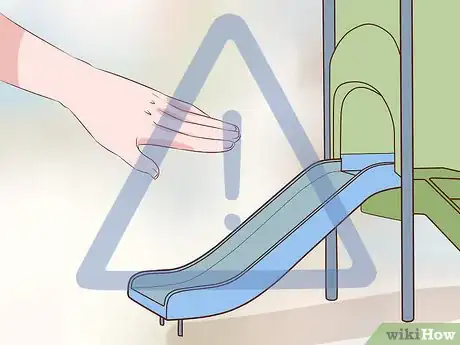




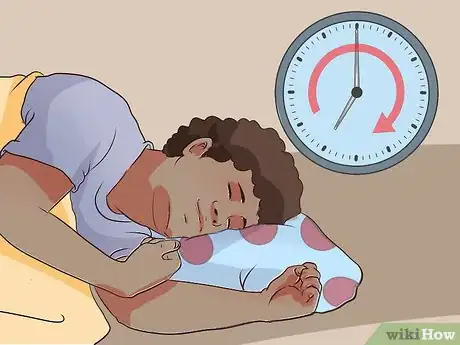
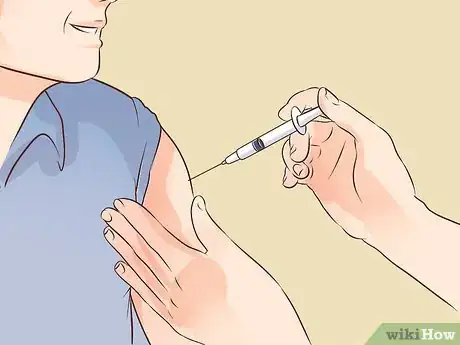
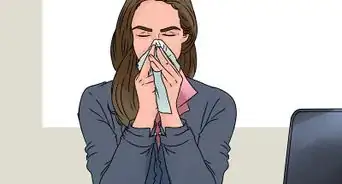
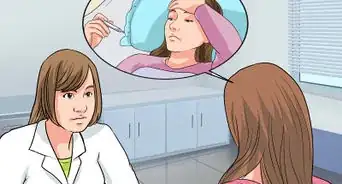





-Step-21.webp)














